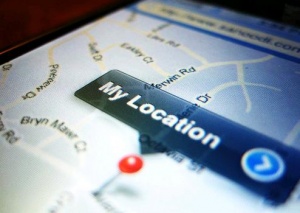Difference between revisions of "Smartphones (Location Services)"
From SI410
| Line 10: | Line 10: | ||
Development of capable technology: | Development of capable technology: | ||
*[https://en.wikipedia.org/wiki/Multilateration multilateration] - location determination via cell phone signal triangulation; uses the variation in the reception of signal bounce-back to determine relative position<ref>Sample footnote</ref> | *[https://en.wikipedia.org/wiki/Multilateration multilateration] - location determination via cell phone signal triangulation; uses the variation in the reception of signal bounce-back to determine relative position<ref>Sample footnote</ref> | ||
| − | *When was the first GPS chip in a smartphone? | + | *When was the first GPS chip in a smartphone?{{citation needed}} |
==Stakeholders== | ==Stakeholders== | ||
Revision as of 15:02, 11 February 2016
Location Services introduction/summary goes here:
- High stability and low entropy of human physical movement
- Issues: default settings (opt-out rather than opt-in), user ignorance, permissions and security, excessive and unnecessary privileges between OS and apps
Contents
Background and History
Development of capable technology:
- multilateration - location determination via cell phone signal triangulation; uses the variation in the reception of signal bounce-back to determine relative position[1]
- When was the first GPS chip in a smartphone?[citation needed]
Stakeholders
- Smartphone users
- Mobile phone carriers
- Software developers
- Advertising/marketing firms and the businesses they serve
Notable Cases
From popular culture, etc.
Legislation
To protect consumers/minimize risk/for convenience (Apple's "Find My Friends" app)
Policy
How major brands vary (iOS, Android, Windows Phone)
Ethical Implications
- In the workplace
- Personal life (family, friends)
External Links
See Also
References
- ↑ Sample footnote
